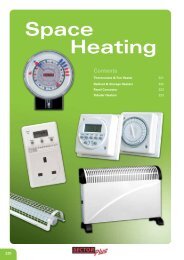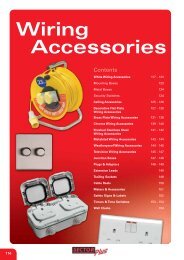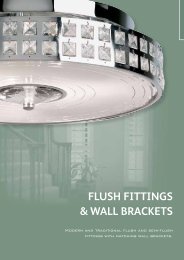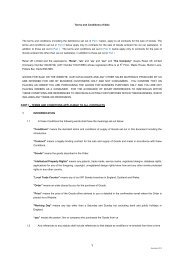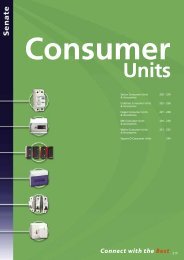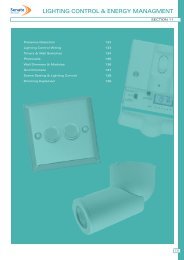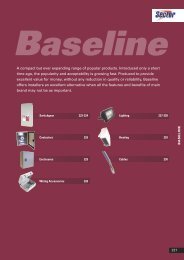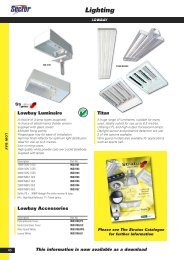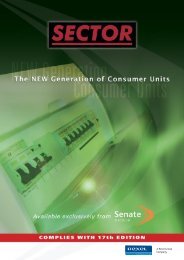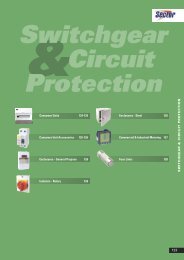Dimplex heat pumps - WF Senate
Dimplex heat pumps - WF Senate
Dimplex heat pumps - WF Senate
- No tags were found...
You also want an ePaper? Increase the reach of your titles
YUMPU automatically turns print PDFs into web optimized ePapers that Google loves.
Trusted technologyA <strong>heat</strong> pump <strong>heat</strong>ingsystem consists of 3components: the <strong>heat</strong>source, the <strong>heat</strong> pump itselfand a <strong>heat</strong> distribution andstorage system.Heat <strong>pumps</strong> are able toproduce more energy thanthey consume by using theconventional refrigerationcycle to absorb <strong>heat</strong> fromthe environment and raiseit to a suitable level for<strong>heat</strong>ing.Using nature’s energy efficientlyHeat <strong>pumps</strong> are among the most efficient <strong>heat</strong>ingand hot water systems available today. Approximately75% of the energy needed for <strong>heat</strong>ing comes fromthe environment. This means that for every 1kWh ofelectricity used to power the <strong>heat</strong> pump compressor,between 3 and 4 kWh of <strong>heat</strong>ing energy are produced,giving the <strong>heat</strong> pump an efficiency of 300-400% orhigher.The <strong>heat</strong> pump’s “efficiency” is known as it’s “Coefficientof Performance” (CoP). This is simply a ratio betweenthe proportion of the total energy supplied that can beextracted from the environment and the amount suppliedby electricity to run the <strong>heat</strong> pump compressor. Thehigher the CoP, the more “free” environmental energythe <strong>heat</strong> pump is using!12Sourcefrom Air or Ground 75%SourceNational Grid 25%1234536EvaporatorHeat PumpCondenser46100%75% of the energy is taken from the environment i.e the air orground and transfered to the <strong>heat</strong> pump.25% of the energy is sourced from the national grid in the normalway of supplying your electricity. This is used to operate the <strong>heat</strong>pump but with very low consumptionThe energy from the air or ground is transfered to the refrigerantinside the <strong>heat</strong> <strong>pumps</strong> evaporator. This causes the temperature ofthe refrigerant to rise and change state from liquid to gas.The refrigerant gas is then compressed, using an electrically drivencompressor, reducing its volume but causing its temperature to risesignificantly.A <strong>heat</strong> exchanger (condenser) then extracts the <strong>heat</strong> energy from thehot refrigerant to <strong>heat</strong> water for central <strong>heat</strong>ing, underfloor <strong>heat</strong>ingor domestic hot water.After giving up its <strong>heat</strong> energy the refrigerant turns back into a liquidand is able to absorb energy from the environment, allowing thecycle to begin again.5Built to last241Powerful, quiet, safe and reliable. The “heart” of the<strong>heat</strong> pump is the Copeland scroll compressor, providinghigh levels of efficiency, reliability and low noise operation.13234Always in control. The WPM <strong>heat</strong> pump managermonitors, regulates and controls the entire system toensure optimum performance and efficiency for <strong>heat</strong>ing,domestic hot water and where applicable, cooling.Evaporator. Large surface area plate <strong>heat</strong> exchangersallow for efficient <strong>heat</strong> transfer of energy from theenvironment. They are compact, efficient and reliable.Insulated casing. Sound insulation around the insidesof the <strong>heat</strong> pump casing reduce operating noise to aminimum.Trusted technology7



